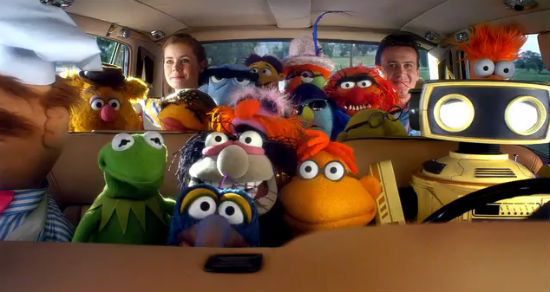
Jim Henson is generally considered to be a genius, but manufacturing is not frequently cited as one of his core competencies. Before we explore what Henson and his colleagues knew about production lines, let's take a quick quiz to test your Muppet knowledge. Name the following four characters:

You probably had no trouble identifying Kermit, Miss Piggy, and Fozzie... but could you name the fourth one? I didn't think so, but you have a good excuse: That Muppet isn't famous and it doesn't have a proper name. It's one of the Whatnots -- a series of customized Muppets that are currently on sale at the toy store FAO Schwarz. Customers choose between 3 different body types, 14 sets of eyes, 16 noses, 23 hair options, and 16 costumes. Once you've made your choices, employees will build your unique puppet (there are 247,296 possible variations) while you wait.
When the Whatnots debuted at FAO in late 2008, they had a lot going against them. At $130 a puppet, the price point was expensive.* The puppets would look Muppet-esque, but they wouldn't look like Kermit or Gonzo or any of the other featured characters. Right now, there's a Muppet revival** in the works (Woo hoo!) but in 2008 the Muppet brand was undervalued. Despite all of that, the Whatnots were a big hit. Jennifer 8. Lee reported in the New York Times that, "In a retail environment that has been disappointingly moribund this year, the decades-old Muppets may be one of the brightest points this holiday season." FAO quickly ran out of stock of two of the three body types. The Whatnots were originally also available online, but they had to temporarily disable the online store because they couldn't keep up with the demand.
Yes, the customized Whatnots are a great case study. It's a story full of successes (demand far exceeds supply) and failures (demand far exceeds supply), but the lesson actually goes back much further to the original Whatnots. The design-your-own-puppet concept was inspired by the many extras that were featured on The Muppet Show.
Kermit may sound like Ernie, but he sure as heck doesn't look like Ernie. Those puppets were custom designs, and it took a lot of time and money to develop them. In any given episode of The Muppet Show, there would be a huge variety of parts to cast. It would have been prohibitively expensive to try to build all of those puppets by hand each week, so instead they built a series of generic puppets to act as extras and bit players. They could radically change the appearance of the puppets by sticking on a new nose or new wig. Change the eyes and a sleepy accountant turns into an evil spy! Add some sharp teeth and now it's a monster!
And that's what Jim Henson and the Muppet designers knew about manufacturing: modular design saves money and allows you to meet a demanding production schedule. That's true whether you're looking at a pair of eyes that can be attached to any puppet head or if you're looking at a chassis that can be used for multiple vehicles.
Find more business insights from unlikely places at Unexpected Experts.
* Since the launch, the price has come down to $99.
** For proof, look at the hit videos on YouTube, the new movie, or even the rumors*** of a new TV series.
*** Unfounded rumors which I'm personally trying to spread... but rumors nonetheless!
